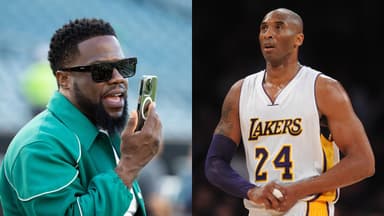Kobe Bryant was a player who found inspiration in anything. Oddly, the Black Mamba had a strange obsession with classical music which helped him on the court.
Advertisement
Kobe Bryant is one of the greatest icons the sporting world has been privileged to witness. After dedicating uncountable hours in the gym, the Los Angeles Lakers, the Black Mamba really reached the pinnacle of the game at the end of his career.
Bean had a work ethic unlike any others and had a crazy obsession with perfecting his craft. The sheer competitive spirit he possessed and his fixation to be the best at any given point is what help him set apart from the rest of the superstars.
Kobe had a knack for finding inspiration for the unlikeliest sources. Believe it or not, the Mamba really found inspiration in classical music. Bryant was really fascinated by German composer Ludwig van Beethoven. On several instances in his career, Kobe would help shape a few characteristics of his game around Beethoven’s symphonies.
Also Read: When Kobe Bryant Got His Revenge On Gilbert Arenas For Calling Himself The ‘Black Mongoose’
Kobe Bryant explains how he found inspiration from Beethoven when he suffered a torn Achilles tendon
Back in 2017, a year after his retirement, Kobe Bryant revealed how he structured one of the championship games around the rhythms of Beethoven’s Fifth Symphony. In an interview
“Every game has a structure, just like a piece of music has structure and momentum. You have to be conscious of how that momentum is building to be able to shift or alter it.”
Back in 2013, in the dying minutes of the Lakers-Warriors matchup, Bryant sadly tore his left Achilles tendon. During that time, the thought of retiring would haunt him. But, instead of giving up and calling it a career, Kobe took inspiration from Beethoven. The deaf composer was not supposed to compose his famous Ninth Symphony, and yet he did. Similarly, the chances for Kobe to return to the court looked slim but he did manage making a comeback at the age of 36.
“Beethoven was not supposed to compose the Ninth Symphony while being legally deaf. Not being able to hear and composing the Ninth Symphony was probably a bigger challenge than playing basketball with one and a half legs.”
Not only did Kobe use Beethoven’s Symphonies to structure his game around, the 18-time All-Star even managed to learn to play one of his melodies on the piano. Being the avid learner he was, he learnt to play Beethoven’s “Moonlight Sonata” on piano for his wife Vanessa in the most unorthodox way.
“Sitting down and taking lessons would be too easy,” he says. “So I taught myself by ear.” …
Taking lessons wasn’t enough. Anybody can do that. Kobe had to be exceptional. So he’d put headphones on, listen to “Moonlight Sonata” on loop. And try to figure out the music on the keyboard in front of him.
“If you just sit down and say, ‘I’m going to learn this thing until I do,'” he says, “there’s not really much out there that you can’t figure out eventually.”
Beethoven’s Moonlight Sonata calms me down when I reach my breaking point #relaxandfocus pic.twitter.com/i2imK51p
— Kobe Bryant (@kobebryant) January 22, 2013
Also Read: Warriors legend Klay Thompson on why he never hesitates to let it fly
Clearly, the cannot quite be any other athlete like Kobe Bryant.





